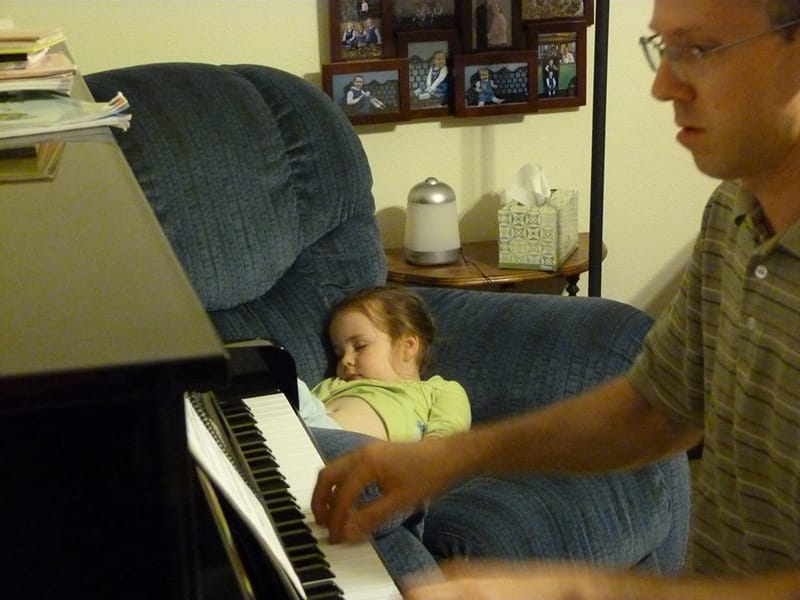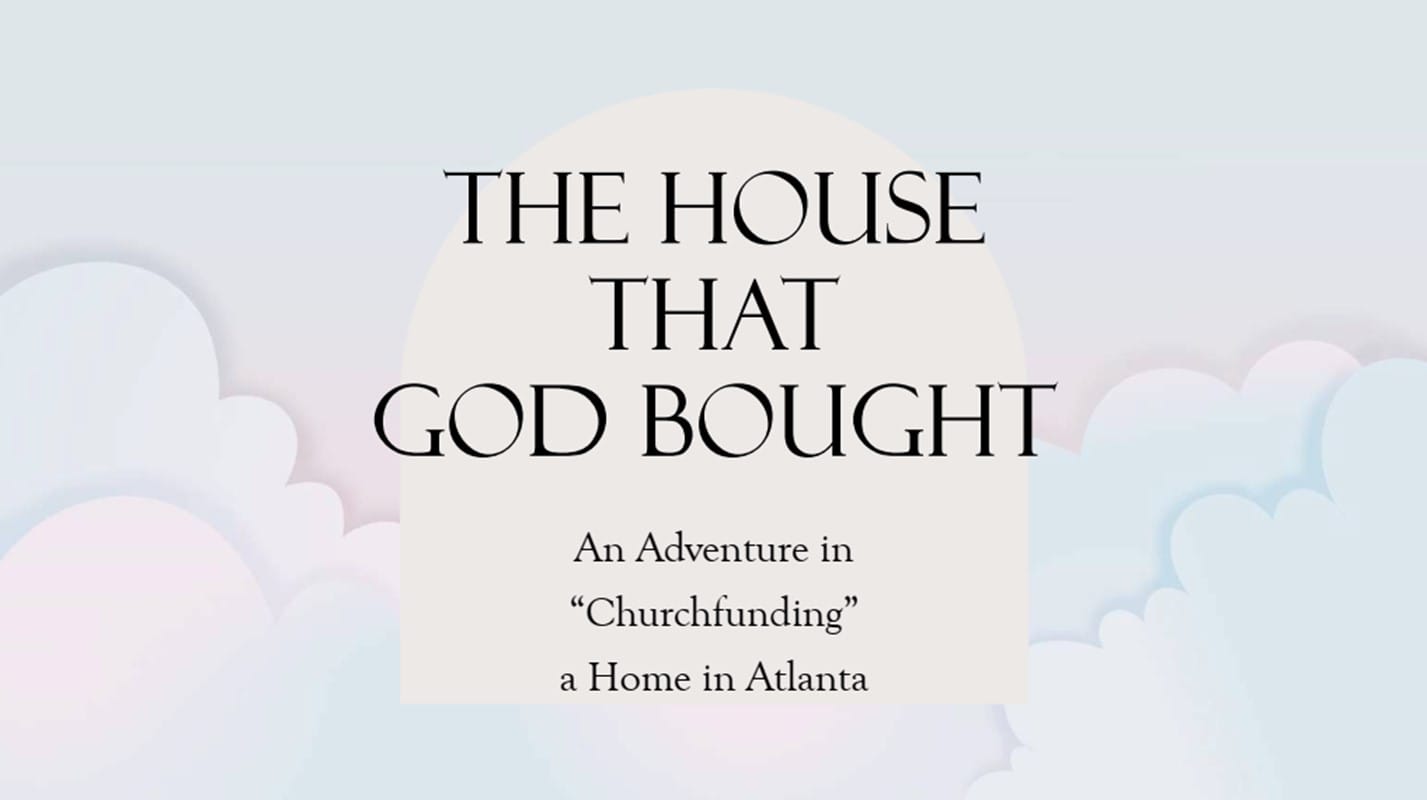My last post generated some helpful feedback about the place of the arts in the Christian life. In that post I took an exegetical approach to the topic, examining one Scripture passage and challenging how it is sometimes used in defense of extravagant artistic investments. But most questions about Christian living are not decided by a solitary Scripture passage—and especially by a passage that isn’t directly about the topic at all, as I argued is the case with the story of the woman who anointed Jesus’ feet.
So in this post I’d like to begin to set the topic of the arts within a larger biblical framework—thus doing what is often called biblical theology. (And if you persevere to the end, I even have a cute picture to share.)
First, here are some lines from the feedback I received:
Why do we have to have verses to justify everything that we do...
I don’t have a proof text for the arts…
I’m not sure that I can supply a Biblical basis in support of the arts…
These comments are quite natural, given the relative silence in the New Testament about the kinds of activities we classify as “the arts.” So I agree: It’s pretty hard to point to one Bible verse, especially any verse written expressly as a directive to Christians, and say that we’ve found “a proof text for the arts.”
I suggest, however, that this lack of a proof text does not leave us entirely free to develop our own philosophical or emotional apology for our personal artistic preferences. Rather, our double task is to trace the big story that God tells us in Scripture and then to accurately understand our time and place within that story. (This is one of the tasks of the discipline of biblical theology—to consider theological themes as unfolding trajectories within the larger biblical narrative, rather than as the isolated observations of textual exegesis or the timeless conclusions of systematic theology.)
Some of the feedback I received hinted in this direction:
I’ve recently been wondering if a negative view of arts is a result of a “leave the earth, God’s going to destroy it anyway” mentality, instead of becoming part of God’s redemptive project on the earth, in which man’s signature counts…that is, he is by virtue of his very nature, his likeness to his Creator, creative…
Here we see hints of some key plot developments in the story of our world: restoration (the return of Christ at the end of the age), redemption (God’s plan to rescue from sin), and creation (mankind created in the image of the Creator). And of course redemption reminds us also of the fall. This gives us all four of the plot movements commonly identified by Reformed theologians: creation, fall, redemption, and restoration.
(See here for verbal and visual explanations of each. And I have suggested that naming the final movement glorification might better reflect the fact that Christ’s return will usher in not merely Eden restored, but a new world where we will realize an eternal consummation of God’s vision beyond anything ever experienced in Eden.)
Another response also pointed to creation:
I would offer a defense based on the nature of man. Artistic expression is a part of every known culture, even cultures that make efforts to eliminate them. I suspect its just a part of who we are, like language. In fact, art IS a language. Attacking artistic expression seems dehumanizing...
Another response complicated these four plot movements a bit by mentioning Israel (as well as restoration):
As I read about the intricacy of the artwork that went into Solomon’s Temple, I have to think that this too was intended to honor and glorify God.
What about some of the scenes involving the musical art in Revelation, what was its prime purpose?
N.T. Wright’s biblical theological scheme might help us here. He suggests that the Bible carries God’s authority by telling the story of the world in five acts. He identifies them as follows:
(1) Creation; (2) Fall; (3) Israel; (4) Jesus. The New Testament would then form the first scene in the fifth act, giving hints as well (Rom 8; 1 Cor 15; parts of the Apocalypse) of how the play is supposed to end.
As Wright points out, understanding the Bible as a five-act play (or as a four-movement plot, if you prefer the Reformed system) has implications for our hermeneutics (paradigms for how we interpret Scripture and what it says to us today):
The church would then live under the ‘authority’ of the extant story, being required to offer something between an improvisation and an actual performance of the final act. Appeal could always be made to the inconsistency of what was being offered with a major theme or characterization in the earlier material. Such an appeal—and such an offering!—would of course require sensitivity of a high order to the whole nature of the story and to the ways in which it would be (of course) inappropriate simply to repeat verbatim passages from earlier sections…
The New Testament is written to be the charter for the people of the creator God in the time between the first and second comings of Jesus; the Old Testament forms the story of the earlier acts, which are (to be sure) vital for understanding why Act 4, and hence Act 5, are what they are, but not at all appropriate to be picked up and hurled forward into Act 5 without more ado. The Old Testament has the authority that an earlier act of the play would have, no more, no less…
The story has to be told as the new covenant story. This is where my five-act model comes to our help again. The earlier parts of the story are to be told precisely as the earlier parts of the story. We do not read Genesis 1 and 2 as though the world were still like that; we do not read Genesis 3 as though ignorant of Genesis 12, of Exodus, or indeed of the gospels. Nor do we read the gospels us though we were ignorant of the fact that they are written precisely in order to make the transition from Act 4 to Act 5, the Act in which we are now living and in which we are to make our own unique, unscripted and yet obedient, improvisation.
(See here for the source of these quotes and for fascinating suggestions about how God mediates his authority through the story told by the Scriptures.)
So, where are we in the story of biblical theology?
Using the traditional Reformed scheme, we are in the third movement: redemption. God is still busy redeeming this world from sin. We are living after the cross, but before “the time of restoring all the things about which God spoke by the mouth of his holy prophets long ago” (Acts 3:21).
Using Wright’s scheme, we are in the final act, Act Five. We are no longer living in Acts One through Four. But we are also not yet living in the final scene within Act Five.
So, in either scheme, we are living in some tension, in a partially-redeemed state within a world that is not yet restored. We must not forget God’s creation purposes, yet we cannot simply live as if we are still in Eden. We must lay hold of God’s vision of restoration, yet we cannot live as if we are already on the new earth. This is still the time of spiritual warfare and of Great Commission living.
What does this mean for the place of the arts in the Christian life?
At minimum, this:
- It means that pointing to our nature as creations who create is crucial, but insufficient.
- It means that the artistic intricacies of Solomon’s temple are illuminating, but not determinative.
- It means that the heavenly artistic grandeur described in Revelation awakens our hope, but does not define our current experience.
Artistic delight now is a reminder of Eden and a foretaste of Glory. It is a concert performed for soldiers who are on temporary leave from the front lines, healing their wounds before they return to battle. It is recess between classes at school. It is love-making between the duties of tilling the soil and raising the children.
Consider that last analogy further in light of Scripture. Let’s use the four Reformed movements to examine marriage through the ages:
Creation: God makes humans male and female. He declares “it is not good that the man should be alone; I will make him a helper fit for him” (Gen. 2:18). The one-flesh union is blessed by God and humans are told to be fruitful and multiply.
Fall: Marriage is deformed in many ways post-fall, with polygamy and divorce permitted thanks to the hardness of man’s heart. Marriage is still the normal state, but normal marriage is not particularly normal. God does strange things like apparently blessing his kings with multiple wives and using a pagan beauty contest (that’s far too mild of a term for what actually happened) to save his people from genocide.
Redemption: God both uses marriage and operates beyond marriage to bring his Son into the world. His Son never marries. He blesses marriage, calling people back to God’s creation purposes. Yet he also blesses celibates—those are “eunuchs for the sake of the kingdom of heaven”—and says “Let the one who is able to receive this receive it.” (See Matt. 19:10-12.)
Paul, likewise, paints a double picture. On the one hand, he paints a glorious picture of marriage as a type of Christ and the church. (See Eph. 5:22-33.) On the other hand, filled with passion “to secure… undivided devotion to the Lord,” Paul says that he wishes all were single as he is. Notice his appeal to our place within the big story that Scripture tells: “This is what I mean, brothers: the appointed time has grown very short. From now on, let those who have wives live as though they had none… For the present form of this world is passing away.” (See 1 Corinthians 7:7-8, 29-38.)
And significantly, both Jesus and Paul suggest that both marriage and celibacy are gifts, given differently to different persons.
Restoration: In words that probably shaped Paul’s vision, Jesus noted that “in the resurrection they neither marry nor are given in marriage” (Matt. 22:30). Instead, we have the consummation of the eternal reality toward which earthly marriage points: the marriage supper of the Lamb (Rev. 19:9; 21:2, 9-11).
I think we can see parallels with the arts through the ages. Here are some tentative suggestions—I am certainly moving beyond exegesis into theological deduction:
Creation: I do think that the Bible blesses the image of humans as creations who create. We see hints of this in Adam’s naming of the animals and care of the Garden, or even in his poetic praise of his new bride. Some Anabaptists need to ponder this more. I’m thinking of those who bless quilting bees, agricultural arts, and a cappella four-part harmony but leave little room for photography, literature, or the performing arts.
Fall: The arts certainly go to seed post-fall. Consider idolatrous images, pagan hymns, or even the heavy taxation and slavery used to build Solomon’s temple. The latter example reminds me of how the Roman Catholic Church during the middle ages siphoned off the wealth of Europe to build cathedrals and glorify the Vatican. Or consider the star-centered and commercialized nature of so much Christian art today. But should we also consider economic inequalities and indulgences closer to home?
Redemption: Little is said in Scripture about the arts in this movement; hence the need for discussions like this. Based on the marriage analogy, I offer a few suggestions.
Jesus was a carpenter, he told astounding stories, and he did sing hymns. To call him an “artist” might be stretching the evidence, however. There is no suggestion that he spent hours practicing on the harp or even that he led his disciples in multi-part choral works. He didn’t own a home and didn’t seem impressed by the grandeur of the temple, so architecture wasn’t high on his list of active priorities. I don’t think we read anything about him engaging in any visual arts besides writing in the sand. His mud pies were decidedly utilitarian, designed for healing eyes. Even his parables, magnificent as they are, were not staged performances as our artistic endeavors usually are, but rather woven into the fabric of everyday life.
And Paul? While he built tents, there is no indication he saw this as anything besides laborious commercial work. I certainly cannot imagine him investing the proverbial 10,000 hours to become an expert on an instrument such as the flute. He was too bent on the Great Commission to commission any works of art besides offerings for the poor saints in Jerusalem.
Yet the paradigm of “gifts” is also a clue. “Each has his own gift from God,” Paul wrote of marriage and singleness, “one of one kind and one of another” (1 Cor. 7:7). For over 10 years now, singleness has not been my gift. My prayer before I met my future wife was that God would lead me to someone with whom I could serve him better than how I could serve him alone. I believe God answered that prayer for me, at least for this season of my life.
Similarly, my artistic engagement has varied through seasons of my life. For several years while in college, I often achieved from 3/4 hour to 1-1/2 hours at the piano daily. Now I often play less than that in one week. I confess that, just as I am weak and have felt a “burning” need for marriage (1 Cor. 7:9), so I often feel a great need for the refreshment that is offered by the arts. Accompanying fellow musicians and performing for others has brought moments of ecstasy. Other times the only prayer I have been able to offer is to let my fingers wander over the piano keyboard, searching alone for the groans of the Spirit.
And often this refreshment comes through the artistic gifts God has given to others. When I was a youth, listening to Beethoven taught me on a deep heart level that joy is often found only after great struggle. Mozart’s Requiem and Brahms’ Symphony No. 1 have been played at high volume to soothe my youthful (and sometimes not so youthful) angst. The poetry and song of Rich Mullins has stirred me to my depths. And Phil Keaggy’s song “Play Through Me” has been my prayer, too:
Up late again tonight,
I feel a song coming on…Maker of all melody fill my heart with song,
Play how You feel, oh play thru me.
Healing can come through the song
Your own hands upon,
This is for real, no fantasy.
(And since I am “up late again tonight,” too, I better soon wind down the crafting of this post.)
Restoration: Given the symbolic language of much of Revelation, I think we can say little concretely about arts in the world to come. If we take the function of metaphor seriously, however, we must conclude that there is something similar-but-grander in the heavenlies to the very best of earthly art. While I admit the song “The Music of Heaven” is not among my personal favorites, I do anticipate that Jesus’ presence will bring a passion and fulfillment beyond anything I have experienced in the best moments of musical ecstasy here on earth.
So what is the conclusion of the matter? I think in this age of redemption, in these middle scenes of Act 5, we will rightly see traces of God’s good creation purposes among his people. Just as we rightly celebrate Christian marriages, so we can rightly celebrate Christian artists. (I’m not insisting here on a specifically “Christian art”; that is another discussion.) We will see and bless a diversity of both gifts and callings. There must be room for poets and painters and potters in our churches. Even banjo players. Artistic excellence does indeed show something of the glory of God.
But we will also recognize that here we have no abiding symphony. In this world we will have trouble staying on key. More than that, we will weigh our artistic desires, examining our hearts: are we getting “entangled in civilian pursuits” or pleasing “the one who enlisted” us (2 Tim. 2:4). We will remember the Great Commission mission of the church. We will ask ourselves hard questions: Am I worshiping the creature or the Creator? Am I serving God and my neighbor with my approach to art, or am I merely serving myself? (Sometimes our neighbors can best help us answer this question. And who is my neighbor?)
I think my previous post left a few readers worried that I was anti-art. I’m not sure if this post will help or not. In a last-ditch effort to redeem myself, let me sign off with a picture. Hopefully this proves I’m not a total Philistine. Tonight I put my middle daughter to sleep to the sounds of Beethoven, Mozart, Chopin, and Schumann. Hopefully she heard a faint echo of her Savior singing over her:

What do you think? How should we navigate the “already but not yet” tension surrounding the arts? Share your thoughts (preferably in sonnet form) in the comments below.


